Select the graphs that would have balanced forces acting upon the object?
1, 2 & 3
Objects in motion stay in motion and objects at rest stay at rest until the forces become unbalanced.
Bonus: Which object is moving with constant velocity in the negative direction?
A truck with mass 2000 kg is traveling on a road at 50 m/s. Calculate the momentum of the truck.
P = 2000 * 50 = 10,000 (kg*m/s)
Calculate the weight of a 130 kg mass.
Weight = mass x gravity
Weight = 130 kg x 9.8 m/s/s
Weight = 1,274 N
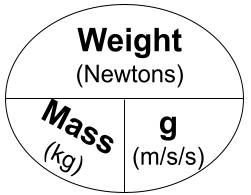
Which force diagrams are unbalanced in the left/right direction?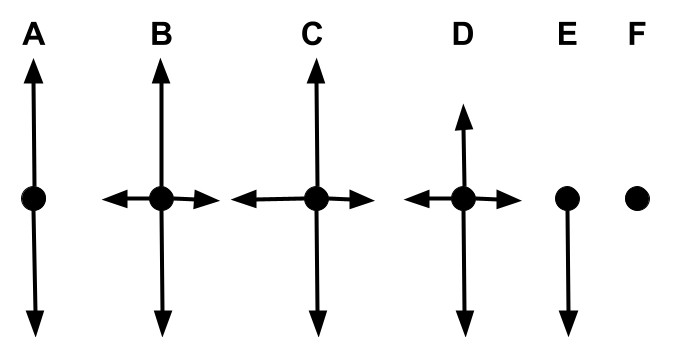
C
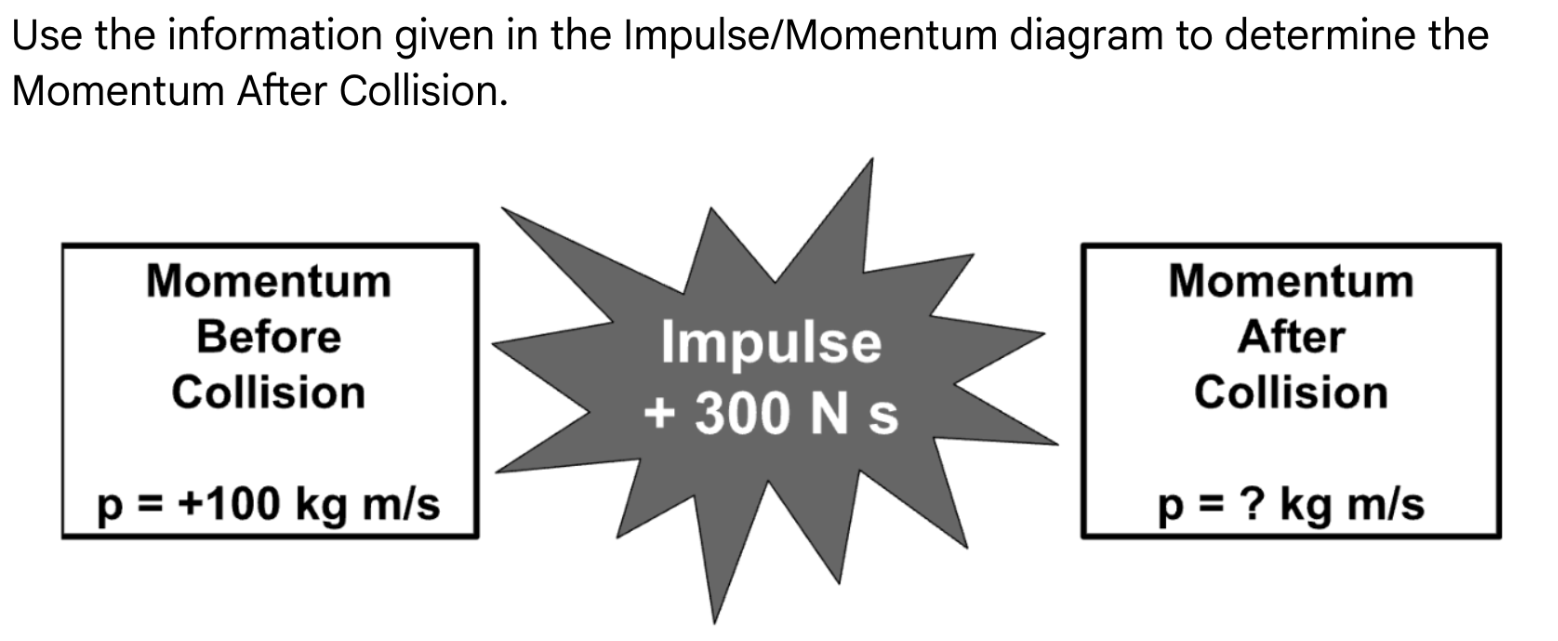
J= 400 (N*s)
Which of the graphs represent an object(s) moving with unbalanced forces?
4
Bonus: Which object is at rest?
A soccer ball is kicked with a velocity of 12 m/s and has a momentum of 5.4 kg⋅m/s north.
What is the mass of the soccer ball?
Mass = 0.45 (kg)
Calculate the mass of a 5,000 N object.
Mass = Weight / gravity
Mass = (5,000 N )/ (9.8 m/s/s)
Mass = 510.20 kg
Which Force Diagrams are unbalanced in the up/down direction?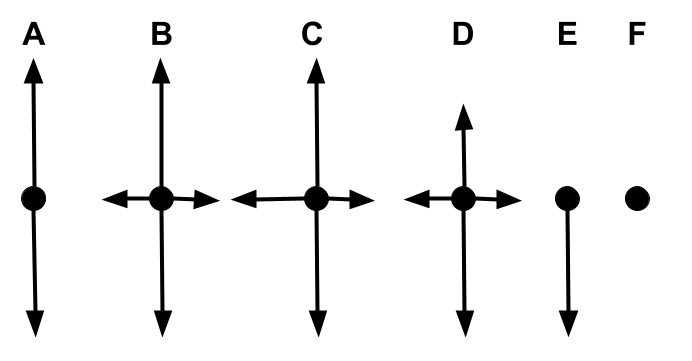
D & E
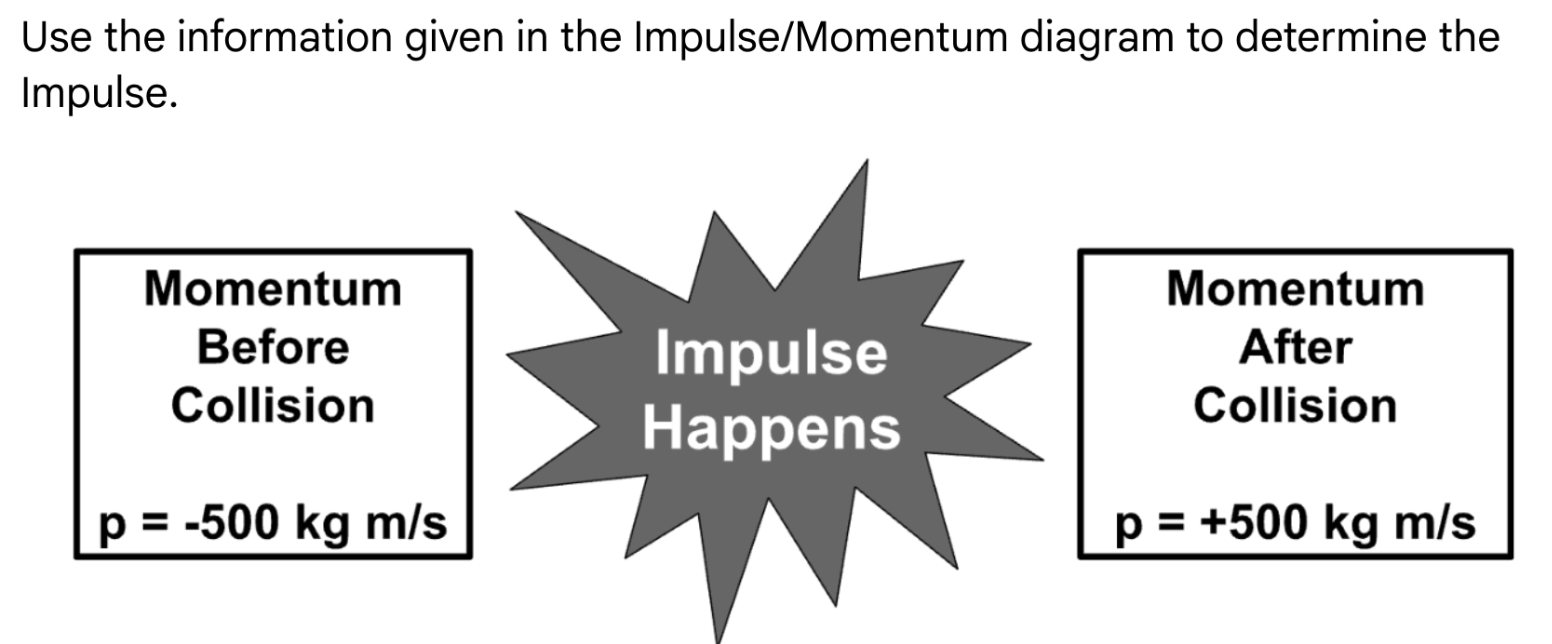
Impulse is 1000 (N*s)
Describe the relationship from the graph below.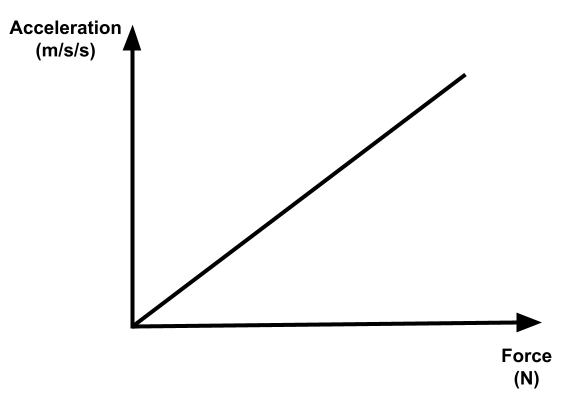
As force increases acceleration also increases.
Bonus:
Which Newton's Law does this represent?
A 1500 kg car traveling at 20 m/s applies its brakes and comes to a complete stop over a period of 4.0 seconds.
What is the initial momentum of the car?
What is the average net force exerted on the car during braking? (Hint: The average net force is equal to the change in momentum divided by the time interval, Favg=ΔtΔp).
Pi=(1500 kg)(20 m/s)=30,000 kg⋅m/s
Fnet=Δt/Δp = −30,000 (kg⋅m/s)/4.0 (s) = 7,500 (N)
Calculate the weight of a 388 kg lion.
Weight = mass x gravity
Weight = 388 kg x 9.8 m/s/s
Weight = 3,802.4 N
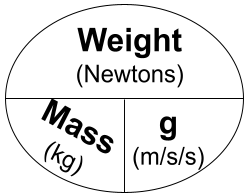
Calculate the Net Force acting on a 100 kg object that is accelerating at 5 m/s/s north.
Fnet = mass x acceleration
Fnet = 100 kg x 5 m/s/s
Fnet = 500 N north
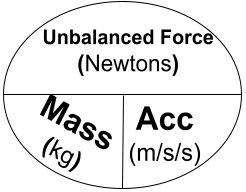
Bonus: Which direction is the object moving? If it is moving, what happening to the object's velocity?
A 0.145 kg baseball traveling at 35.0 m/s is caught by a catcher. The catcher brings the ball to rest in 0.025 s. What is the Impulse?
J=(−)5.075 (N⋅s)
Describe the relationship from the graph below.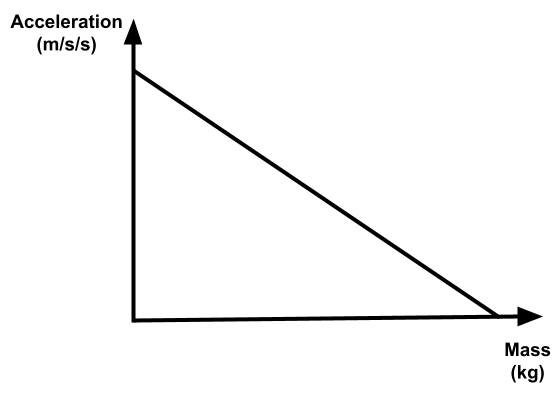
As mass increases the acceleration decreases.
Bonus:
Which Newton's Law does this represent?
A 0.057 kg tennis ball is served with a velocity of 35 m/s in the positive x-direction. The opponent returns the ball with a velocity of 25 m/s in the negative x-direction.
What is the initial momentum of the tennis ball?
What is the change in momentum of the tennis ball?
Pi =1.995 (kg⋅m/s) in the positive direction
Δp=(−1.425 kg⋅m/s)−(1.995 kg⋅m/s)
Δp=(−)3.42 kg⋅m/s
Calculate the gravitational acceleration, g, if the weight of the object is 5,000 N and the mass is 126 kg.
g = Weight / Mass
g = (5,000 N) / (126 kg)
g = 39.68 m/s/s
Bonus: Is this planet larger or smaller than Earth?
What is the acceleration of the 20.4 kg object based upon this Free Body Diagram?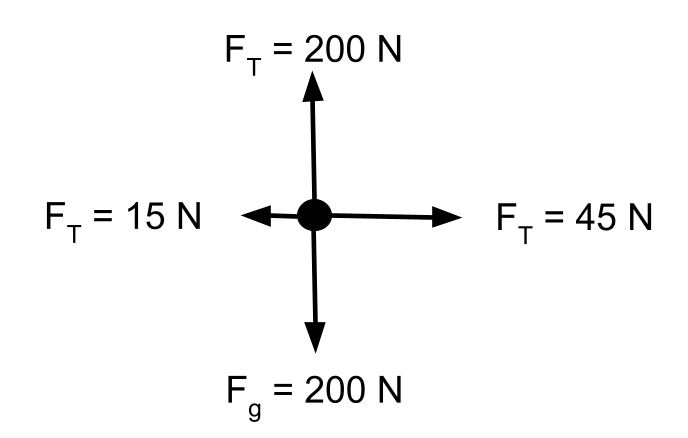
Acceleration = Fnet / mass
Acceleration = (30 N) / (20.4 kg)
Acceleration = 1.47 m/s/s rightward
Bonus: Describe the motion of the object if the object is moving leftward.
A 450 gram hockey puck is initially moving (right) across the ice at 25 m/s. The puck strikes a player's stick and is propelled back in the opposite direction at 35 m/s. The collision between the puck and the stick lasts for 0.005 seconds.
Calculate the following:
The change in momentum (Δp) of the hockey puck.
The impulse (J) delivered to the hockey puck.
The average force (Favg) exerted on the puck by the stick during the collision.
Δp=(−)27.0 (kg⋅m/s)
J= (−)27.0 (kg⋅m/s)
Fnet = (−)5400 (N)
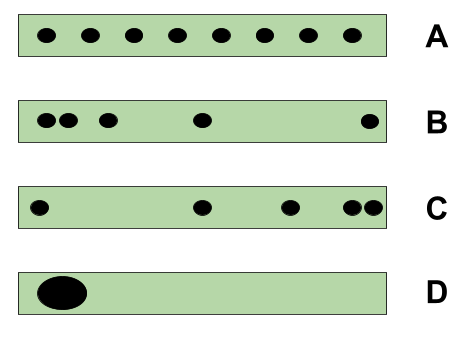
Which graph (1, 2, 3 or 4) matches the dot diagram for B?

4
Bonus:
The dot diagram for B could also match which other graph of position depends on time? Draw it!
A rocket of total mass 2000 kg is traveling in space at a velocity of 100 m/s. The rocket's second stage, with a mass of 500 kg, detaches and continues moving in the original direction at 120 m/s.
Assuming no external forces, what is the velocity of the larger remaining section of the rocket (1500 kg)?
P initial=P final
Mv=m1v1+m2v2
v1=m1MV−m2v2
v1=1500 kg(2000 kg)(100 m/s)−(500 kg)(120 m/s)v1=1500 kg200,000 kg⋅m/s−60,000 kg⋅m/sv1=1500 kg140,000 kg⋅m/s
v1≈93.33 (m/s)
Calculate the weight of a 10 kg hammer on the moon, which has a g value of 1.63 m/s/s.
Weight = mass x gravity
Weight = 10 kg x 1.63 m/s/s
Weight = 16.3 N
Bonus:
What is the weight of the hammer on earth?
What is the acceleration of the 3.06 kg object based on the Free Body Diagram?
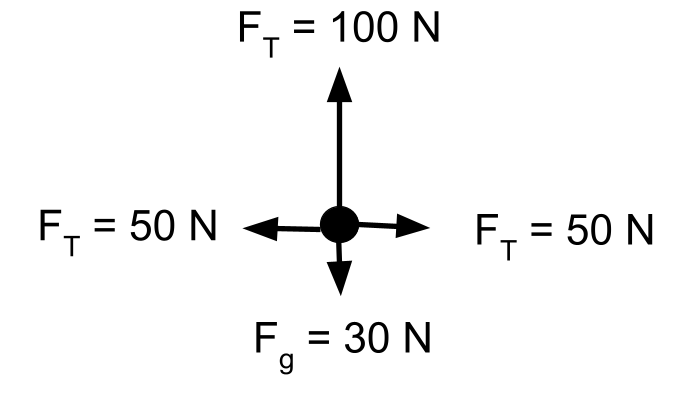
Acceleration = Fnet / mass
Acceleration = (70 N) / (3.06 kg)
Acceleration = 22.87 m/s/s
Bonus: How fast would this object be going after 2 seconds if the object started at rest?
A 6.0 kg bowling ball is rolling down a lane at a speed of 8.0 m/s. It strikes a single pin, and the collision lasts for 0.038 seconds. After hitting the pin, the bowling ball continues moving in the same direction, but its speed is reduced to 5.2 m/s.
Calculate the following:
The change in momentum (Δp) of the bowling ball.
The impulse (J) delivered to the bowling ball.
The average force (Favg) exerted on the bowling ball during the collision.
Δp=(−)16.80 (kg⋅m/s)
J= (−)16.80 (kg⋅m/s)
Favg≈(−) 442.11 (N)